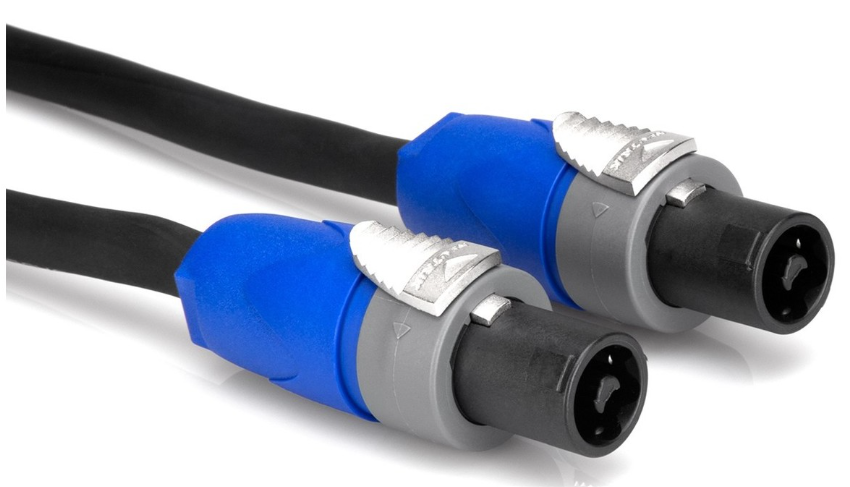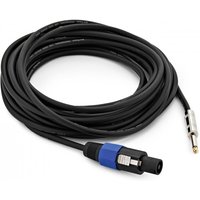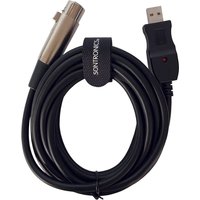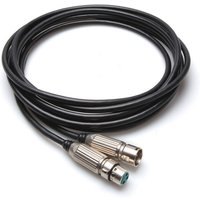Hey there, audio enthusiasts and live sound aficionados! 🎶 Are you ready to dive into the electrifying world of PA speaker leads? These unsung heroes of the audio world play a crucial role in every live performance, ensuring your sound is crisp, clear, and utterly captivating.

Let’s unravel the mystery behind these essential cables. PA speaker leads are not just mere wires; they are the lifelines that connect your audio equipment, creating a seamless flow of sound from your mixer to your speakers. Whether you’re setting up for a rocking concert, an intimate gig, or an important event, the right speaker leads can make all the difference.
Why are they so important, you ask? Well, imagine them as the highways of sound, transporting audio signals efficiently and effectively. The quality of these leads directly impacts the sound clarity, strength, and overall reliability of your PA system. No more worries about sound distortions or technical glitches!
Now, let’s talk versatility. PA speaker leads come in various types, lengths, and connectors, each tailored to suit your specific setup needs. From XLR to Speakon, from quarter-inch jacks to banana plugs, the options are as diverse as the sounds they carry.
So, gear up and make sure your audio toolkit includes these vital components. With the right PA speaker leads, you’re not just connecting equipment; you’re setting the stage for an unforgettable auditory experience. Let’s plug in, turn up the volume, and let the good vibes roll!
Types of PA speaker leads
PA speaker leads, essential for transmitting audio signals from amplifiers to speakers, come in various types. Each type has its own advantages and disadvantages, making them suitable for different situations:
- Speakon Cables
- Advantages:
- Secure Connection: Speakon connectors lock into place, preventing accidental disconnections.
- High Power Handling: Ideal for high-power speakers, minimizing signal loss and distortion.
- Durability: Robust and reliable, designed for professional use.
- Disadvantages:
- Compatibility: Not universally compatible with all speakers and amps, especially older models.
- Price: Generally more expensive than other types of speaker cables.
- Advantages:
- 1/4 Inch (TS or TRS) Jack Cables
- Advantages:
- Universality: Widely used and compatible with a variety of equipment.
- Flexibility: Available in TS (Tip-Sleeve) for unbalanced connections and TRS (Tip-Ring-Sleeve) for balanced connections.
- Affordability: Generally less expensive.
- Disadvantages:
- Secureness: Prone to accidental unplugging as they don’t lock in place.
- Signal Interference: More susceptible to noise and interference, especially in unbalanced TS formats.
- Advantages:
- XLR Cables
- Advantages:
- Balanced Audio: Minimizes noise and interference, ideal for long cable runs.
- Secure Connection: Locking mechanism prevents accidental disconnections.
- Durability: Generally robust and suitable for professional environments.
- Disadvantages:
- Cost: Can be more expensive than TS cables.
- Limited Power Handling: Not typically used for high-powered connections.
- Advantages:
- Banana Plug Cables
- Advantages:
- Easy to Connect: Simple plug-and-play design.
- Versatility: Often used in home audio systems and adaptable to various setups.
- Disadvantages:
- Security: Less secure, can become loose over time.
- Power Handling: Not ideal for very high-power applications.
- Advantages:
- Bare Wire Cables
- Advantages:
- Direct Connection: Can be directly screwed or clamped to terminals, offering a solid connection.
- Customizable: Length and configuration can be customized.
- Disadvantages:
- Convenience: Requires more effort to connect and disconnect.
- Durability: More prone to corrosion and damage over time.
- Advantages:
- RCA Cables
- Advantages:
- Commonly Used: Widely available and used in many consumer audio products.
- Disadvantages:
- Signal Quality: Not typically used for professional PA systems due to lower signal quality.
- Advantages:
When choosing PA speaker leads, consider the specific needs of your setup, including the type of equipment, the required length of the cable, the environment in which it will be used, and the power handling needed. Each type of cable offers a balance of advantages and disadvantages, making some more suited for certain applications than others.
How to choose?
Choosing the right type of PA speaker lead depends on several factors related to your specific audio setup and requirements. Here’s a guide to help you make an informed decision:
- Compatibility with Equipment:
- First and foremost, check what types of connectors your speakers and amplifier or mixer support. This will narrow down your options. For instance, if your speaker has Speakon inputs, you’ll need Speakon cables.
- Power Handling and Signal Strength:
- For high-power applications, like large venues or outdoor events, opt for cables that can handle high wattage without signal loss. Speakon cables are typically preferred in these scenarios.
- For smaller setups or home studios, 1/4 inch or XLR cables might be sufficient.
- Cable Length and Signal Quality:
- Longer cable runs can lead to signal degradation. If you need long cables, consider balanced options like XLR or TRS cables to minimize noise and interference.
- For shorter connections, unbalanced cables like TS might be adequate and more cost-effective.
- Durability and Build Quality:
- If you frequently set up and tear down your equipment, or if your cables will be subject to wear and tear (like on tour), prioritize durability. Speakon and XLR cables are known for their robustness.
- Budget:
- While it’s important not to compromise on quality, your budget will also play a role in your decision. Weigh the cost against the benefits each cable type offers.
- Type of Event or Application:
- For live concerts, secure connections are crucial, making Speakon and XLR cables favorable.
- In studio settings, where sound quality and minimal interference are paramount, XLR and TRS cables are often preferred.
- Ease of Use and Setup:
- If you need quick and easy setup and teardown, look for cables that are simple to connect and disconnect. Banana plugs and 1/4 inch jacks are generally more straightforward in this regard compared to Speakon.
- Future-Proofing Your Setup:
- Consider investing in cables that not only meet your current needs but will also be compatible with potential future upgrades in your audio equipment.
In summary, the choice of PA speaker leads should be based on the compatibility with your equipment, the specific needs of your audio environment (like power handling and cable length), the frequency of use and required durability, as well as your budget. Often, a combination of different types of cables is used to optimize the setup for various aspects of the sound system.
CHECK PRICES AT ZZOUNDS


